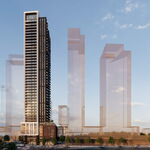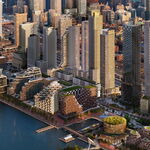It might be useful to start adding a cost consideration to many of the ideas that are promoted on UT (and I am as guilty as anyone in promoting a good 'cause' without much thought to any budget or cost considerations). If we had our own FAO office to add some relevant cost considerations to these ideas, which are mainly public dollar investments, our ambitions and our planning might be revised.
Lots of us here can put reasonable guestimates on cost. They will be class 5 estimates or class 4 at best when there's no detailed engineering or drawings to work with, but they'll be vaguely in the ballpark, in current $.
I've provided these for those speculating on Sheppard Subway Extensions.
For instance, the Original Ontario Line was budgeted around $11 billion when announced. As of 2022 the cost has about doubled with a completion date of 2031, so certainly room for that number to expand.
Its important to note that the government has muddled many costs in its O/L numbers, these include maintenance and operation, rolling stock and construction of the Maintenance and Storage Facility etc.
There's also the matter of financing costs which will vary based on what portion of a project is cash from current and whether the financing is private or public.
This is important to note, because while its likely one would acquire extra rolling stock for extensions, one would hope not to need an additional MSF at least for modest expansion.
Would anyone wish to hazard an estimate on extending the line in two directions?
No, LOL. I could try to get some high level numbers, but I would need to know what route someone has in mind to provide an estimate.
For budgetary reasons its important to review what the province does with its revenues. The Ontario Government already subsidizes electrical power costs (7 billion) the price of gas (almost a billion), transit fares, expenses for owning a car etc.....the Ontario Deficit will be about $10 billion next year, the Provincial Debt is over $400 billion (and debt service will cost about $14 billion per year. Our GDP growth is below 2%, perhaps less then 1% next year, and unemployment sits at around 6.2%. Its not a tremendously rosy picture as the government insists on reducing taxes, yet increasing services (we all support this, but at what cost)
I am very much of the view that:
a) Taxes need to be raised.
b) As a matter of principle, revenues should align w/expenses excepting wars and extraordinary recessions.
c) The government can and should spend its money more wisely. (I'm not a champion of corporate welfare/regional development funds, or P3s); on electricity, I don't like the form of the current subsidy, but i don't think maximal rate hikes make sense either. I'd rather transfer a portion of Hydro One/OPG's debt to the general government account, as a one-time cost, and apply the interest savings to reduce the base rate of electricity. I'd also prefer to do away with time-of-day pricing as I don't feel it was well conceived, most people simply can't load shift; and its a terrible penalty to shift workers or others who may have schedules in conflict w/said rates.
A simplified rate structure with no 'subsidy' in it; one charge for power + distribution (there really is no point in breaking these out from the consumer point of view as you can't change either one); the same usage charge applies at all times, I think would be more efficient, more sustainable, more popular even at a slightly higher net rate than today.
So extensions to Richmond Hill and Seneca? Built alongside or over existing track and replacing, adding to, or augmenting any other existing services? Outside of any purely political consideration (which we all recognize has a significant impact on these decisions) do we have a business case to support this idea with the added estimation of the costs to build and operate such extensions?
The City of Toronto did cover the extension of the Ontario Line to the north in a recent report and ranked it highly, its a high level document, but the case is solid. No one outside of UT has seriously contemplating running two branches. I was merely answering a question in relation to same.




